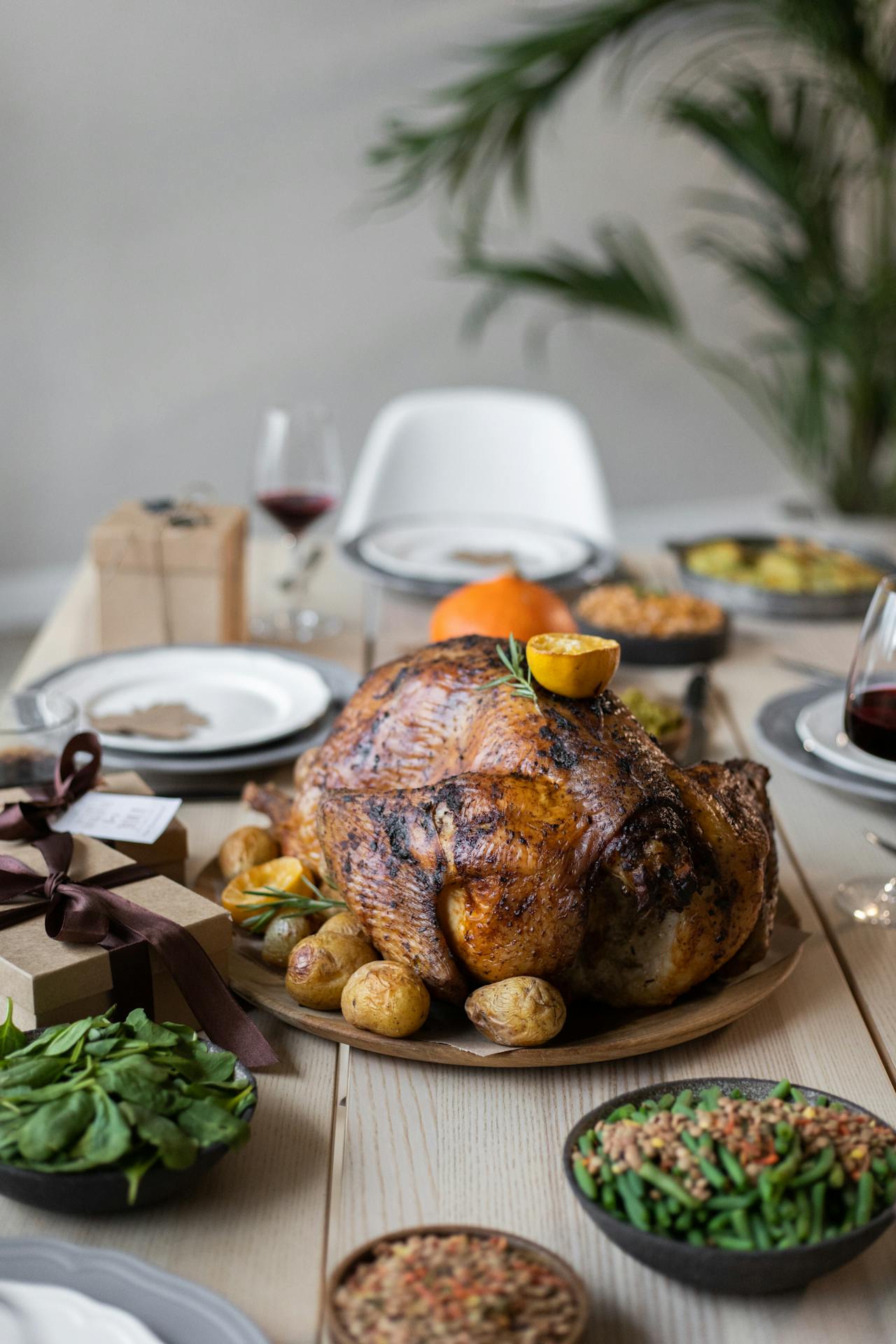Holidays can be hard.
Holiday feasts can bring up mixed emotions for many. Some people look forward to the food more than they look forward to seeing their family! Others are busy planning feast preparations and eager to show off their updated apple pie recipe. Some might be feeling a little burnt out and not looking forward to cooking that much food with little to no help! Who knew there could be so many different emotions over the preparations for a feast?
For people with eating disorders or disordered eating, a thanksgiving feast can bring up a lot of anxiety. We’ve written another blog post about practicing mindful eating over the holidays (click here to check it out) but this blog post will be talking about the hunger scale and where a feast fits on that.
What is the hunger scale?

The hunger scale is a tool to practice mindful eating and listening to your body. The scale helps you to evaluate your hunger and fullness by assigning a number to each level of hunger, from 1 to 10. Simple enough, right? Here is the scale:
- Starving, weak, faint, and dizzy
- Very hungry, cranky, low energy, stomach growling a lot “Hangry”
- Pretty hungry, stomach is growling a little
- You could eat, feeling a little hungry
- Satisfied, neither hungry nor full
- A little full, pleasantly full
- Very full, A little uncomfortable
- Thanksgiving stuffed
- Very uncomfortable, stomach hurts
- Feeling sick and miserable
How do I use the hunger scale?
Before you eat, take a moment to evaluate your hunger. Are you feeling a little hungry? You are at a 4. Are you feeling weak or faint and absolutely starving? You are at a 1!
The goal is to eat when you feel your hunger at about a 3 or 4 on the scale. Try to honor your hunger cues by eating before you get down to a 2 or 1, because it can be easy to ignore cues when you feel so hungry! By eating when you are at a 3 or 4, you are better positioned to listen to your body’s cues.
What is your body saying as you progress through your meal?
Take your time eating in order to really be in tune with what your body is telling you about your fullness. It’s ideal to eat until you feel pleasantly full, which is a 6 on the scale.
While the 3-6 range is the ideal, you may find yourself in a variety of places on this scale, and that’s okay! There is no gold star for “acing” this scale. Each day is different. Sometimes you will feel more hungry, and sometimes you will feel more full. There is freedom in not having to rigidly follow the hunger scale perfectly or in the exact same way every day. This is especially true during the holiday season! You may find yourself reaching for your fourth serving because you want to have more of those delicious mashed potatoes.
It’s normal to sometimes find yourself at an 8 or above when you have a feast in front of you - this isn’t a moral failing! It happens to the best of us. Allow yourself grace when learning how to navigate listening to your hunger and fullness cues, and remember that your hunger and fullness might feel and look different from other people.


Three Helpful Tips:
- Remember that no food is “off limits”! Because there is always access to the foods we like, this frees us up from the pressure of a diet mindset. We are less likely to restrict ourselves or overeat our favorite foods. By eliminating the pressure associated with off limit foods, we are better able to hone in on our hunger and fullness cues and use the hunger scale as intended.
- It might seem counter intuitive, but it is absolutely okay to not finish all the food on your plate! You probably grew up hearing from the adults around you that you had to finish every single bite, but using the hunger scale means that you have permission to honor your body when you are full (even if there is still food on your plate!). The inverse is also true: it’s okay to get seconds, even if others around you this holiday season don’t!
- Remind yourself that this is not your last opportunity to enjoy a feast and (most likely) there will be extra food for later. If you’re stuffing yourself to the point of being uncomfortable, think about how much more you will enjoy that same food as leftovers when you’ve had some time to digest the food you’ve already enjoyed!
Final note on using the hunger scale during the holidays
Holiday feasts can come with a lot of stress, but understanding our hunger and fullness can alleviate some of the emotions that come along with these festivities. Whether you are hearing about the hunger scale for the first time or are a seasoned veteran of the practice, utilizing this tool is a great way to practice mindful and joyful eating (especially during the holiday season!). It may take some getting used to, but the more practice you have with this scale, the more natural it will come to you!
This is not medical advice, and we always recommend that you speak with your primary care physician and a registered dietitian in matters of health and nutrition choices that are best for you.
